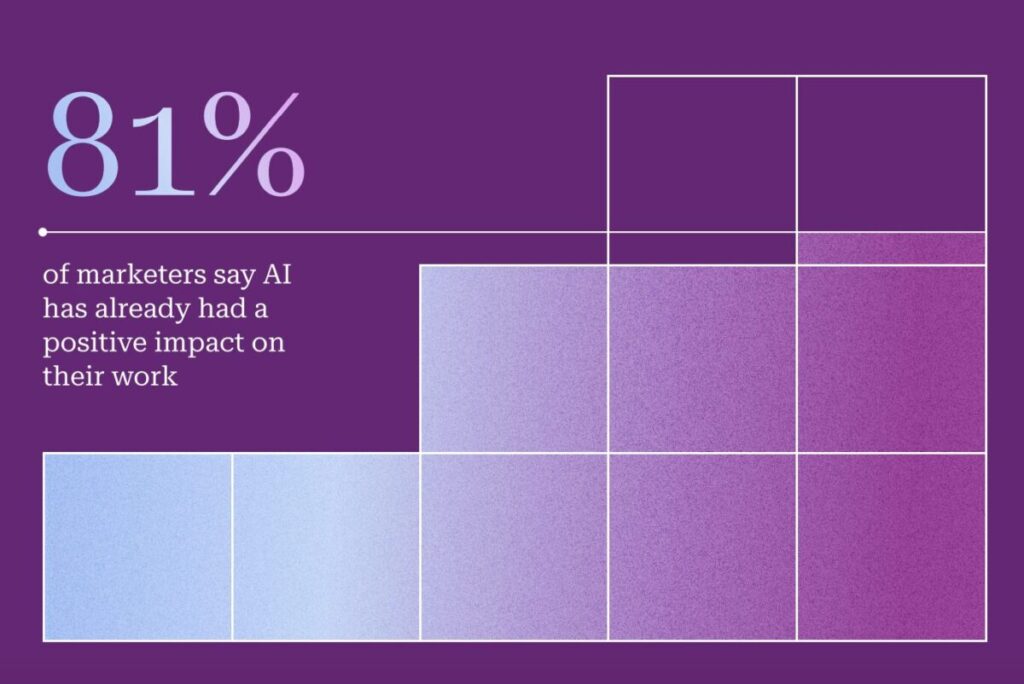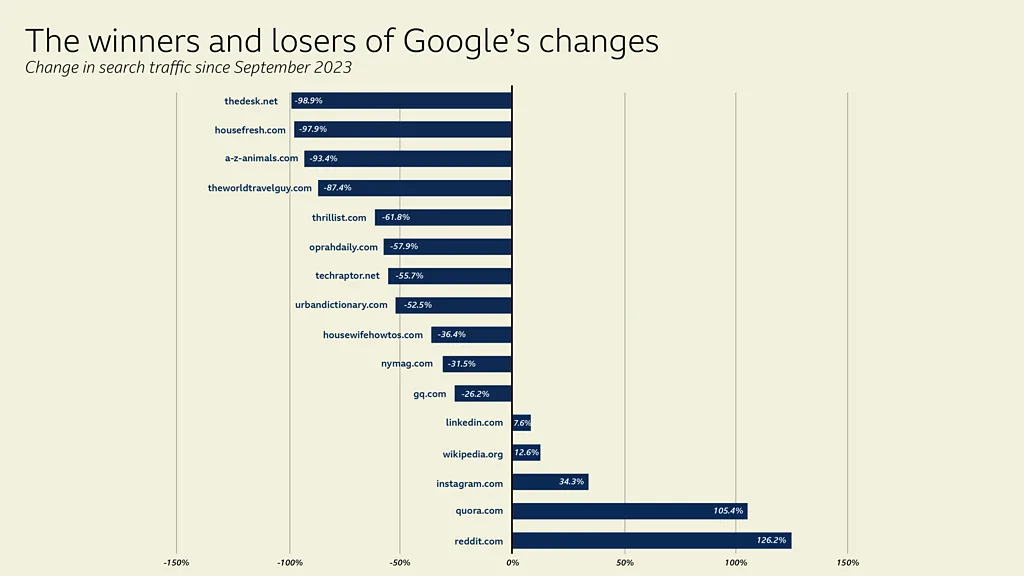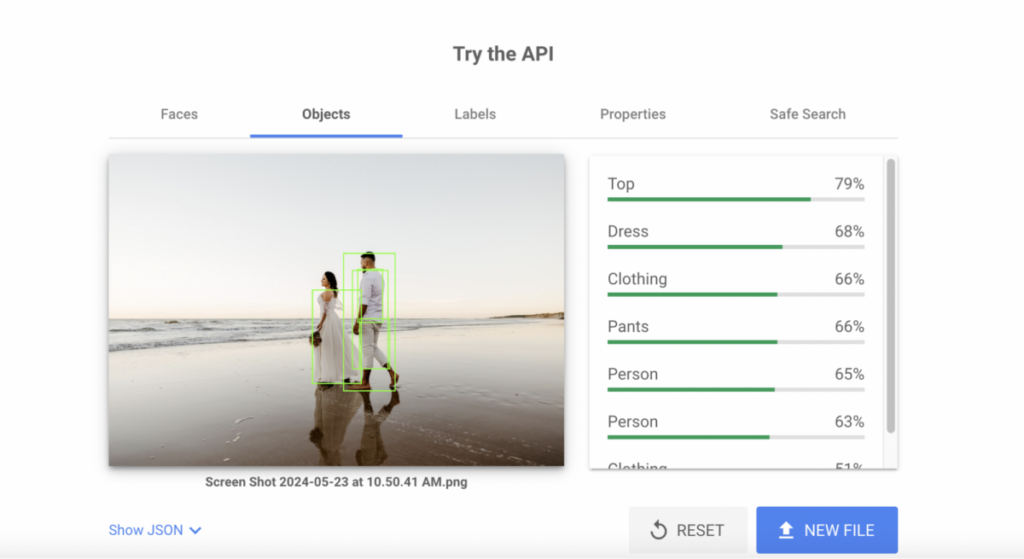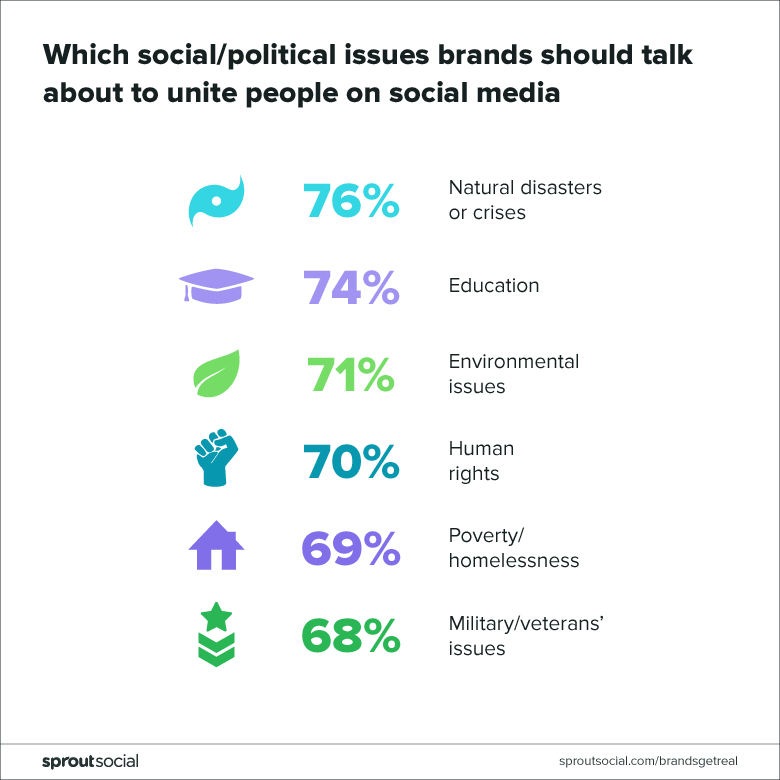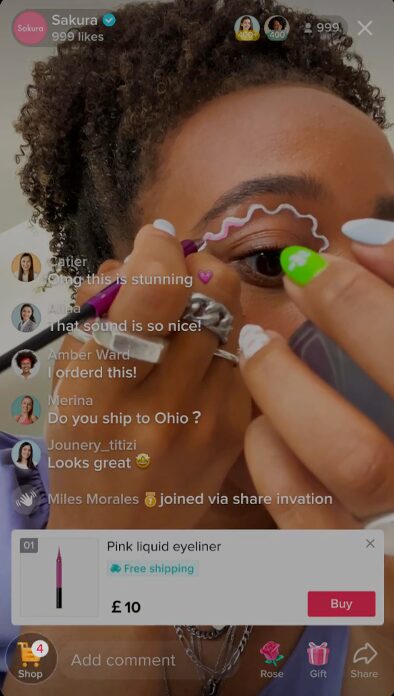Whether it’s due to technological advancements, worldwide phenomena, or changes in consumer behavior, the digital marketing landscape sees a constant shift in trends. While everyone flocks to use the latest tool one day, the next day they might drop it for a newer, more innovative version. Marketers need to constantly stay on top of these digital marketing trends to make sure they’re adapting their strategies to keep up with the competition.
Over the past couple of years, the rapid evolution of artificial intelligence (AI) has resulted in a major disruption across industries, particularly digital marketing. This has influenced some of the major trends shaping the landscape today. Let’s take a closer look at some of the most notable digital marketing trends to prepare for.
8 Most Notable Digital Marketing Trends:
- 1. AI Will Help Marketers Optimize Performance
- 2. Marketers Will Need to Adapt to an AI Disruption
- 3. It Will Take Time to Recover from the Helpful Content Update
- 4. Visual Search Will Become Bigger
- 5. Brands Will Need to Cater to a New Value Mindset
- 6. Use of AR and VR Marketing Will Continue to Grow
- 7. Video Will Continue to Dominate
- 8. Social Shopping Features Will See Increased Usage
- What’s Next for Your Brand?
While many professions have to deal with (justified) fears of AI “coming for their jobs,” marketers can rest easy knowing that AI will make their jobs easier instead of taking it away. So it’s no surprise that over 61% of marketers have used AI in their marketing operations according to our AI Marketing Benchmark Report. In particular, AI’s generative and analytics capabilities will make a marked difference in the efficiency and accuracy of your marketing efforts. Based on our report, 44% of marketers have adopted AI to ramp up their content production efforts. This may involve creating outlines for long-form content, developing SEO content, generating social media content ideas, and even producing captions for their social media posts. As a result, they’ve been able to produce more content and increase their productivity. According to the 2023 Sprout Social Index, 81% of marketers are already seeing the positive impact of AI on their work. These benefits are mainly in the form of freeing up time for creativity (78%) and improving efficiency (73%). Marketers are using AI to improve various aspects of their jobs mainly analyzing social media data, targeting for campaigns and advertising, social media scheduling, and content creation. AI has also helped them with image and video recognition, social media measurement, sentiment analysis, and chatbot building. Additionally, marketers are planning to ramp up their use of AI to support content creation in 2024. While the productivity benefit is apparent, brands are also experiencing improved results as a result of using AI in marketing. A Semrush study revealed that 68% of businesses have been able to increase their content marketing ROI with AI. Moreover, 65% of companies have also improved their SEO results with the help of AI. Despite the positive impact it can bring, there’s no doubt that AI is also causing major disruptions to the marketing landscape. In particular, AI’s effect will be highly apparent in the SEO industry as features such as AI Overview take over search engine results. This feature is intended to provide users with an AI-generated overview to satisfy their search intent, which is likely to draw away some traffic. The good news, at least for now, is that the feature is bringing up a slew of absurd and inaccurate information that’s causing an uproar on the internet. Some results made obvious errors, claiming 1919 to be 20 years ago. Others posed health and safety risks with recommendations to add glue to pizza sauce and giving the okay to leave dogs in hot cars, drink and drive, and even smoke during pregnancy. At the time of writing this post, Google hasn’t released any statements regarding these obvious errors. However, it’s expected that the company will use this incident to inspire future developments and make further improvements to their AI-generated answers. Nevertheless, the main priority is still in providing helpful answers and improving the search experience for users. That’s why the September 2023 update also softened its initial stance on AI-generated content. According to the updated guidelines, there’s no clear indication of a preference for human-generated content. The search engine will continue to prioritize high-quality content that’s considered helpful and valuable regardless of whether it’s generated by humans or AI. This is bound to be good news for marketers who intend to ramp up their AI use for content creation. But it’s crucial to avoid relying on AI alone as is obvious from the AI Overview fiasco. AI should be used as a tool to make your job easier instead of relying on it completely to do your job. The Helpful Content update was one of the most impactful updates that Google made to its algorithms in the past year. This update was intended to tackle content created solely for ranking higher in search meaning that it gave priority to content that’s useful and valuable to users. This had some unexpected consequences, with major publications feeling the impact of the update on their search traffic. For instance, New York Magazine immediately saw 32% less traffic from search in the following six months while GQ.com saw a 26% reduction. Even websites such as HouseFresh saw traffic dwindling, resulting in layoffs. According to the founder, Gisele Navarro, Google was now sending traffic to big lifestyle magazines with articles containing incorrect or inaccurate information. This indicates that although the update rightfully targeted spammy sites, it also took down other legitimate websites in the process. An interesting impact of the update is the climbing traffic of Reddit, where users engage in forum-style discussions. During the same period that the above publications saw a decline in traffic, Reddit witnessed a 128% increase in traffic from Google searches. Similarly, other user-generated sites such as Instagram and Quora were also seeing more visitors. According to a Google spokesperson, this shift is a result of people wanting to learn from others’ experiences. So the search engine is now surfacing content from communities and forums. Considering the massive upheaval caused by the Helpful Content update, there’s no doubt that it will take time to recover. Marketers will need to continue producing helpful content to satisfy users’ search intent. At the same time, they will need to pivot their content marketing strategies based on these latest updates and keep track of underperforming content that needs to be updated or removed completely. Also partly fueled by the evolution of AI, visual search is growing in popularity. As results become more accurate with AI powering visual search engines, people are increasingly relying on tools like Google Lens and Amazon Lens to conduct online searches. In fact, there are 12 billion visual searches performed each month on Google Lens. It basically involves using an image to identify an object or perform searches for similar items. That means someone could discover your product listing by conducting a visual search for a similar product. Say they’re watching a TV show and fall in love with a bag that the main character is carrying. So they take a screenshot and use a tool like Google Lens to search for a bag with the same characteristics and style. In most cases, people conducting this type of search are already in a buying mindset, meaning they’re ready to buy if only they could find the product they want to buy in a suitable price range. So as popular as voice search is today, visual search should be equally prioritized as it allows you to attract high-intent buyers. In other words, you need to optimize for visual search just as you optimize for voice or text search. Producing high-quality images should be the first step to help you improve your chances of showing up in visual search results. You should also use descriptive file names containing the product keyword such as “black-canvas-messenger-bag.jpg” instead of “IMG059.jpg.” Additionally, don’t forget about the SEO best practice of adding an image alt text with relevant keywords. This is a detailed text description to improve your image accessibility, but it also improves your chances of showing up in search results when someone conducts a visual search for relevant items in the image. Marking up your images using structured data is another important step. This will help the search engine understand your product better so that it can deliver it to users conducting relevant visual searches. Finally, consider using Google’s Cloud Vision API to check whether the visual search engine can detect your images. Once you upload your image file, the Vision AI will analyze it and showcase its findings under various tabs for Faces, Objects, Labels, Text, Properties, and Safe Search. Check out the information under each tab to get a better understanding of how the visual search engine is detecting your image. If you see any unexpected results or issues, consider diagnosing the cause and adjusting it to improve your results. A few years back, brands had it easy as they only had to put out a great product at a reasonable price to drive purchase decisions. Now consumers are no longer solely relying on quality and price to decide on a purchase. Instead, they’re adopting a new value mindset where they’re looking to buy from brands with similar values as them. In fact, 82% of consumers expect a brand’s values to align with theirs. Three-quarters have stopped buying from brands over a conflict in values. Many shoppers will even abandon their favorite products instead of compromising on principles. About 39% of shoppers will permanently boycott their favorite brand over a value mismatch. This value mindset has become even more important as Millennials and Gen Z attain more purchasing power. These younger generations are leading the change by choosing to be more mindful of their consumption. This involves supporting brands with specific values that can positively impact the world in one way or another. According to a Sprout Social survey, the highest expectation that consumers have of brands is to be positive contributors to society. In other words, brands need to openly support causes related to political and social issues if they want to cater to consumers with a value mindset. The specific issue may vary depending on the values of your target audience, but you may want to focus on natural disasters and crises. You can also support causes related to education, environmental issues, and human rights depending on the unique values of your brand. From virtual try-on features on shopping sites to branded AR filters on Instagram—the use of AR and VR technology in marketing has seen a rapid increase in the past few years. And with the technology evolving, the growth isn’t going to slow down anytime soon. In fact, Statista reports that the AR advertising market will generate an estimated revenue of $5.2 billion in 2024. This isn’t surprising considering the immersive and engaging experiences that AR and VR technology can provide. Moreover, online shoppers are increasingly open to trying AR and VR to enhance their shopping experiences. According to Statista, 62% of shoppers would be willing to use a 3D smartphone scan to determine the correct size for footwear and apparel. But the use of AR and VR technology in marketing goes beyond virtual try-ons. They can be used for immersive brand storytelling, engaging product exploration, gamified experiences, product demonstrations, AR packaging and print, virtual showrooms, and many more. One of the most innovative VR marketing examples include the Thomas Cook Try Before You Fly campaign that allows travelers to virtually explore various locations before they decide to visit. Video has been dominating the marketing landscape over the past few years. In 2023, online video had an audience reach of 92%, indicating the massive popularity of this content format. While music videos had the greatest weekly usage reach, viral videos, memes, and comedy also came close with a 35.3% weekly usage reach. This is largely owing to the popularity of short-form video content formats such as Instagram Reels and TikTok videos. With their shorter duration and highly engaging nature, these videos tend to get audiences to pay attention. This makes them more likely to be watched all the way through, which could have a positive impact on your performance. In fact, 96% of consumers prefer short-form videos when learning about a product or a service. After all, who has the time or patience to sit around for a 30-minute explainer when you could get most of the essential info in a 1-minute video? Possibly owing to this increased preference, short-form video also has the highest ROI when it comes to lead generation and engagement. So even in the coming months, marketers will continue to leverage shorter videos to keep their audiences engaged. That doesn’t mean that other types of videos will be completely ignored. In particular, live videos will continue to play a huge role in the marketing landscape as social media platforms improve on existing livestream features. For example, TikTok has enabled shopping capabilities in its live video broadcasts. As a result, TikTok Live Shopping will grow in popularity as it facilitates real-time interactions and online purchases simultaneously. Source: shop.tiktok.com On a related note, social shopping features as a whole will see increased usage among brands. As social media platforms ramp up their shopping capabilities, we can expect to see more and more businesses leveraging them to shorten the buying journey and drive in-app purchases. It’s already a well-known fact that social media influences buying decisions. Consumers use various social networks to discover new products and brands and even research their purchases. They look at posts and comments to see what influencers and peers alike are saying about different products and brands, which then helps them make informed decisions on what to buy. But for years, consumers had to leave the social media platform to actually find and buy the product. This meant that they had to go through multiple steps, which creates multiple drop-off points and increases the likelihood that they’ll abandon the purchase. Now with social shopping features, brands can give their customers the option to buy their products directly within the respective social network without having to navigate to an external site. This involves adding product tags to social media posts so that customers can view the product information and complete their purchase right within the app. Some platforms also let you set up a social media storefront that people can use to browse your products just like on your ecommerce site. TikTok even has a dedicated TikTok Shopping tab where users can discover deals, discounts, and recommended products based on their interests and engagement history. Source: newsroom.tiktok.com As platforms like Instagram, Facebook, and TikTok roll out their shopping features to more countries and sellers, we can expect to see a boom in social commerce. In fact, shopping on social media has become extremely popular in the past couple of years. According to Statista, seven out of 10 online shoppers aged 27 to 42 have directly bought something through social networks. As for the social media platforms that consumers prefer, Facebook leads the way across all generations except Gen Z. Moreover, Emarketer found that 28% of U.S. digital buyers between the ages of 18 and 34 have made a purchase on Instagram. Additionally, 26% have made a purchase on Facebook and 22% have made a purchase on TikTok. Moreover, 53% of U.S. shoppers between the ages of 18 and 29 were planning to use TikTok for their 2023 holiday shopping. This gives testimony to the growing adoption of social shopping features among U.S. consumers.1. AI Will Help Marketers Optimize Performance
2. Marketers Will Need to Adapt to an AI Disruption
3. It Will Take Time to Recover from the Helpful Content Update
4. Visual Search Will Become Bigger
5. Brands Will Need to Cater to a New Value Mindset
6. Use of AR and VR Marketing Will Continue to Grow
7. Video Will Continue to Dominate
8. Social Shopping Features Will See Increased Usage
What’s Next for Your Brand?
As the digital marketing landscape evolves with new trends based on new technology and changing consumer behavior, it’s crucial for your brand to stay on top of these changes. This will give you the insight to adapt your strategies according to the changing times so you can keep up with the competition. So how will your brand make use of these latest digital marketing trends?
